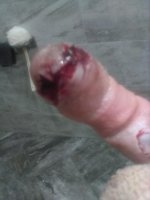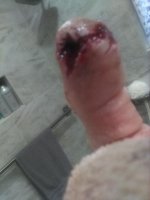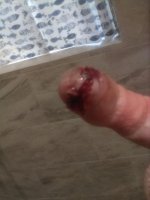reddog81 asked: "OK, so when exactly does the pressure reach it's highest level? Please provide pressure tested proof."
When it peaks, of course! LOL.
The point being that the only way to know when pressure peak occurs is by pressure testing by the PSI method where an oscilloscope is measuring pressure increase until the peak and back to 0 in a measured period of time. That cannot be done with the Crusher method and the only real advantage Piezo PSI testing has over Crusher CUP testing where only the Max average can be found. However, the Crusher method continues to be used and both tests can be conducted simultaneously. And no, I don't run a lab so I don't have the ability to pressure test like Lyman does. And neither do the people who state that pressure peaks before the bullet leaves the cylinder. And in about the same time that a post can be typed, an email can be sent to Lyman, whom does test these things.
"I just took some measurements and it looks like a the base of a bullet will travel about an inch before exiting the cylinder on my N frame 45 ACP revolvers. Do you think peak pressure happens after that?"
Obviously, and as I mentioned, there are differences based on the Max Average Pressure, MAP, of the cartridge, and how much gas volume it creates before pressure peak occurs. The higher the cartridge pressure MAP is, the greater gas volume required. So to quote the Lyman article again: "Movement of bullet into the barrel throat increases the expansion volume of the gases."
That comes from an unvented barrel, but the physical process does not change other than there being a flash-gap between the cylinder and the forcing cone averaging around .006" or less, ideally. The first restriction of consequence that a bullet encounters after leaving the case is the barrel's throat in either case; hence the term Freebore. Unless your cylinder throats are abnormally large, not much gas is leaking around the base of the bullet until the base of the bullet has passed the flash-gap due to the bullet's diameter mostly blocking the escape of gas until that occurs and some of the increasing gas volume escapes from the flash-gap while gas volume is increasing to the point when the bullet is moving into the throat and seals as the bullet meets the resistance of the rifling. And effective seal is not actually created until the bullet obturates, and a softer bullet does that sooner than a harder one in the case of lead bullets compared to jacketed.
So the 1" of bullet travel you're talking about is unrestricted (freebore) until the bullet is into the throat. It certainly seems likely that a .45 ACP cartridge (21,000 PSI) would pressure peak before a .357 Magnum at 35,000 PSI due to the differences in Max Pressure. But coincidentally, I checked the throats on my most used 4" combat revolver at very close to .357" diameter. For pressure to peak before the bullet's travel meets the resistance of the throat would require a substantial loss of gas volume where the only place that can occur is via the flash-gap. And since the gases created are pushing the base of the bullet with not much leaking ahead of the bullet?
But like I said, feel free to contact Lyman and you're certainly welcome to quote what I've stated here.



